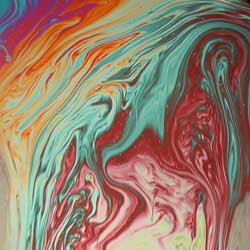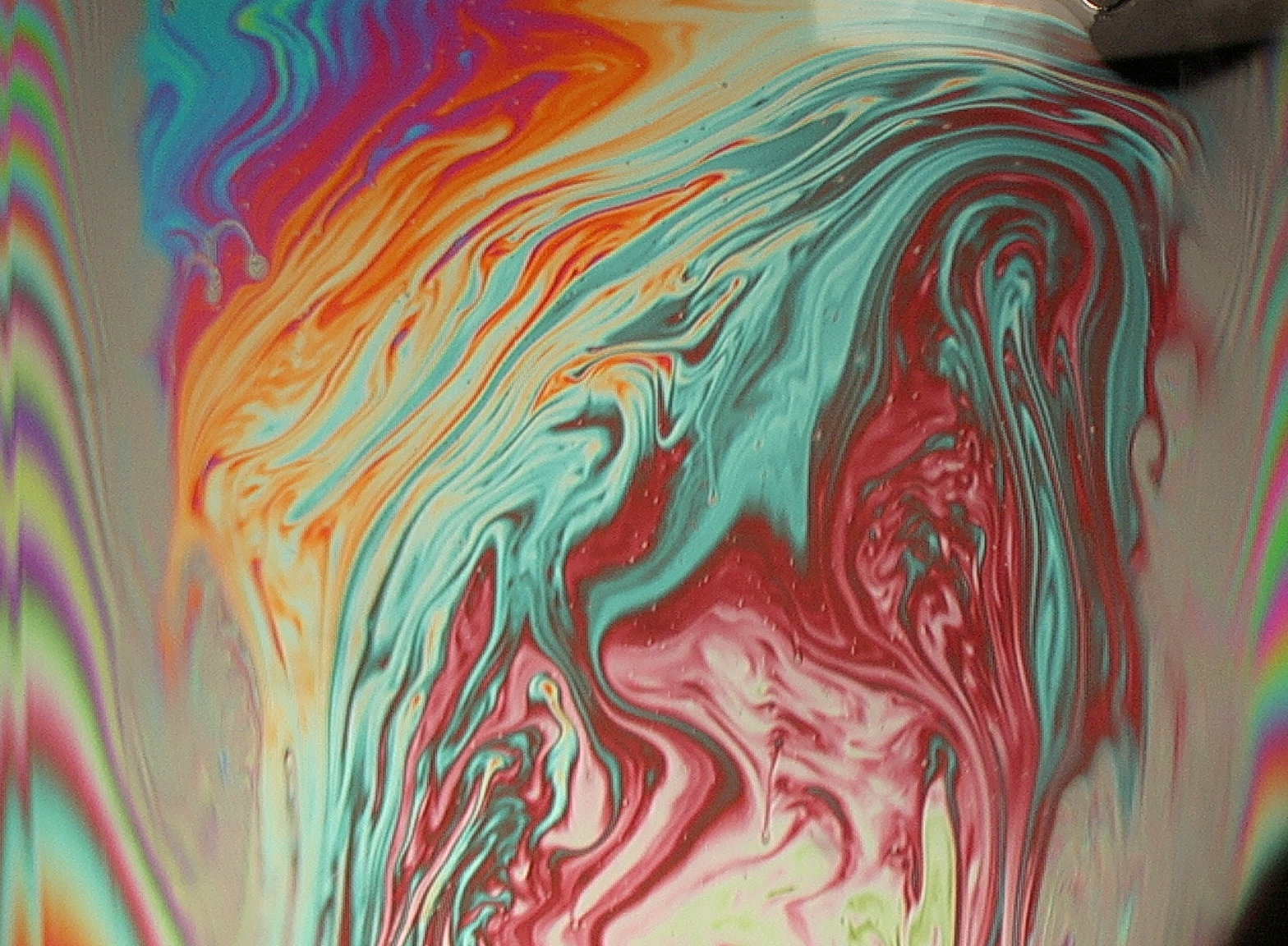A Soapy Solution
Researchers have been frustrated in their attempts to confirm the long-standing theory that describes how dyes mix in turbulent liquids. Now a team reports in the 19 November PRL that they have used the thickness variations signified by colors in a soap film in place of dyes to track mixing and have finally verified the theory, which is widely used in industry to calculate the mixing of chemicals and pollutants.
Imagine a stream flowing around a rock. The turbulent flow behind the rock would fold, roll, and tear a drop of dye, giving it structure at a length scale much smaller than the smallest eddy. A point where the dye is highly concentrated could be just millimeters away from a point where there is hardly any dye at all. Researchers consider the typical size of these variations for each length scale. For example, the typical difference in dye concentration for points one centimeter apart might be twice as large as that for points half a centimeter apart. Batchelor’s theory predicts that the concentration difference should be proportional to the length scale for the so-called viscous-convective range–lengths shorter than about one centimeter in slightly turbulent water. Most researchers have agreed that the theory is sound, but some experiments have failed to confirm it, as have some computer simulations, leaving lingering misgivings.
Now Yacine Amarouchene and Hamid Kellay of the University of Bordeaux 1 in France have used soap films to perform a new test of Batchelor’s theory. Soap films display a rainbow of colors because light shining at the film bounces off both the front and back surfaces, resulting in interference between the two reflections. Each hue corresponds to a different thickness in the film. In a turbulent flow, the varying thicknesses of the film get torn apart and folded over just like particles in a drop of dye. Two areas of average thickness might combine to make an especially thick section of film with a purple color, whereas a part of the film that has been stretched thin might be sky blue.
The researchers sent a solution of water and ordinary detergent down a narrow channel. In the middle of the channel, facing the flow, was a two-centimeter-wide plate. They aimed a laser beam at a spot in the turbulent region behind the plate and used the transmitted light to measure the film’s thickness as it fluctuated over time. The team measured the thickness with nanometer precision and converted the thickness variations in time into thickness variations in space. They confirmed these measurements by shining a white light over a broad section of the channel, which brought out the rainbow colors.
Kellay and Amarouchene verified Batchelor’s prediction for the viscous-convective range–between about one centimeter and one millimeter–but also looked at smaller scales, where previous measurements have been especially difficult. They found that even at these scales the thickness strays quite far from the average, which agrees with computer simulations of the analogous dye problem. Such wide fluctuations imply that a contaminated river or stream could have pockets more polluted than the average, potentially harming aquatic organisms.
The distribution of thicknesses matched Batchelor’s predictions very closely, providing a convincing confirmation of its accuracy, says Walter Goldburg of the University of Pittsburgh. “This beautiful experiment that Kellay [and Amarouchene] did leaves no doubt that the theory of Batchelor is working,” he says.
–Chelsea Wald





